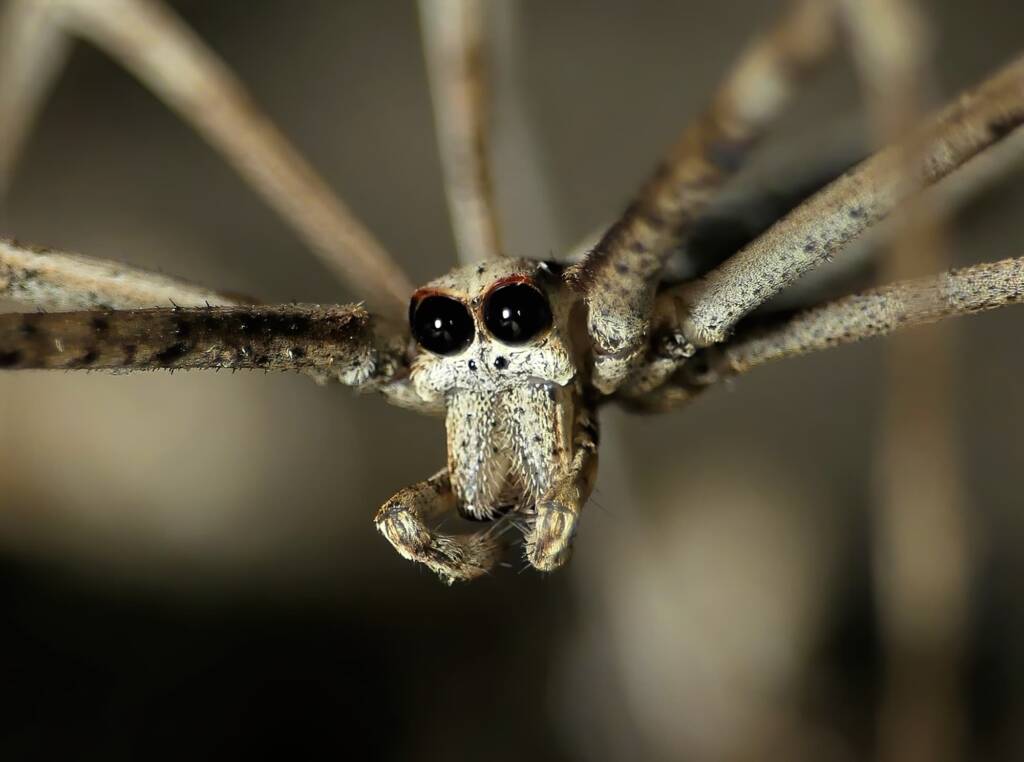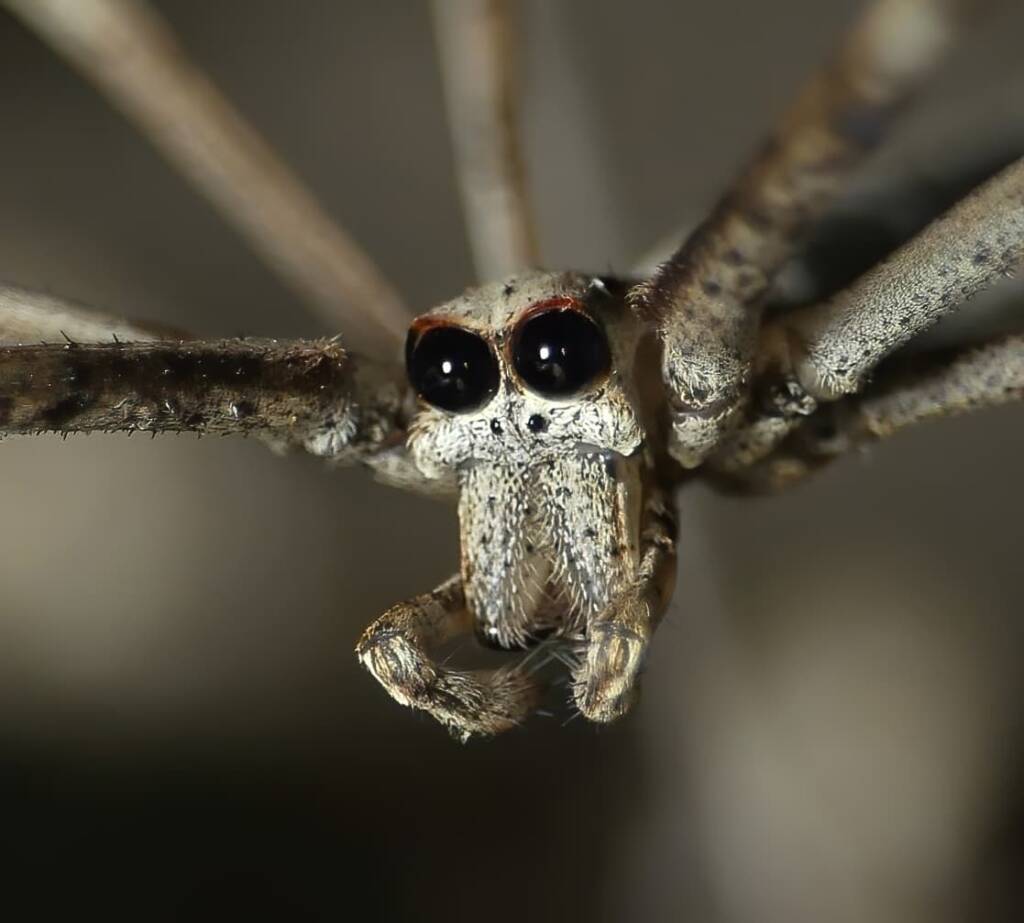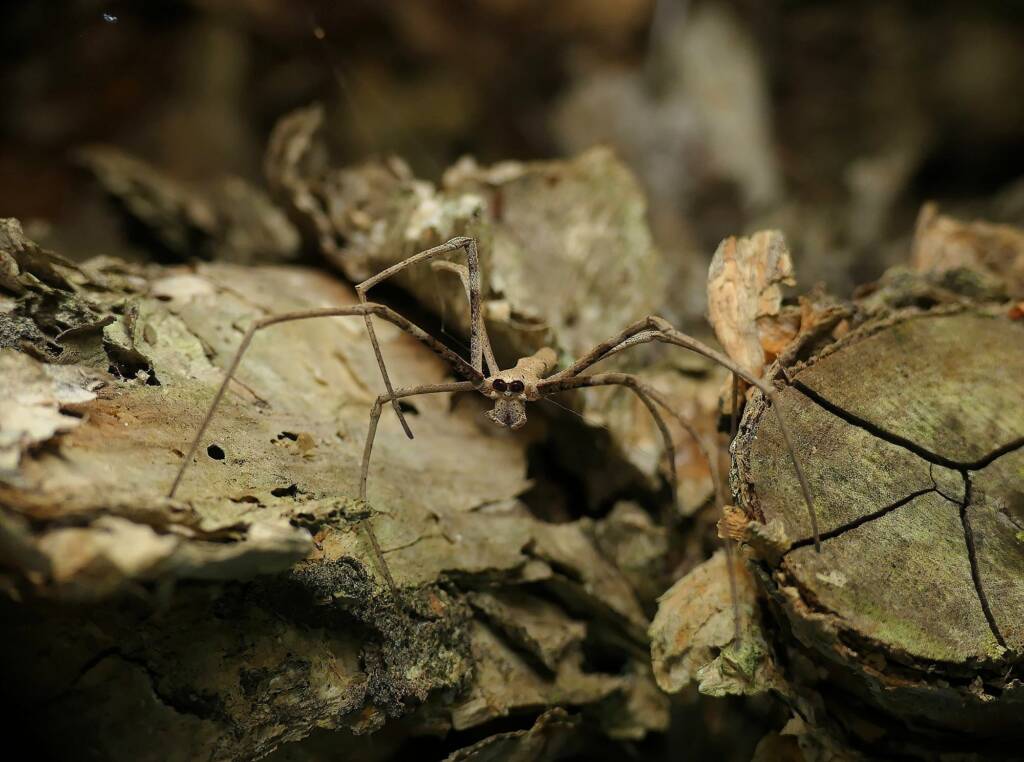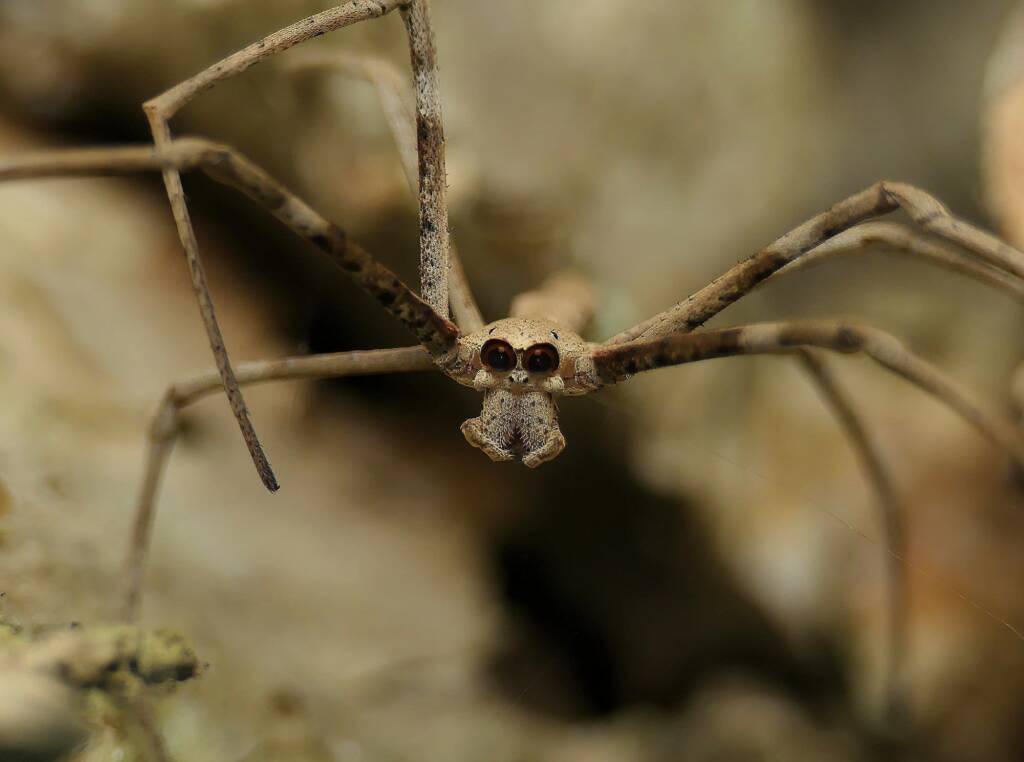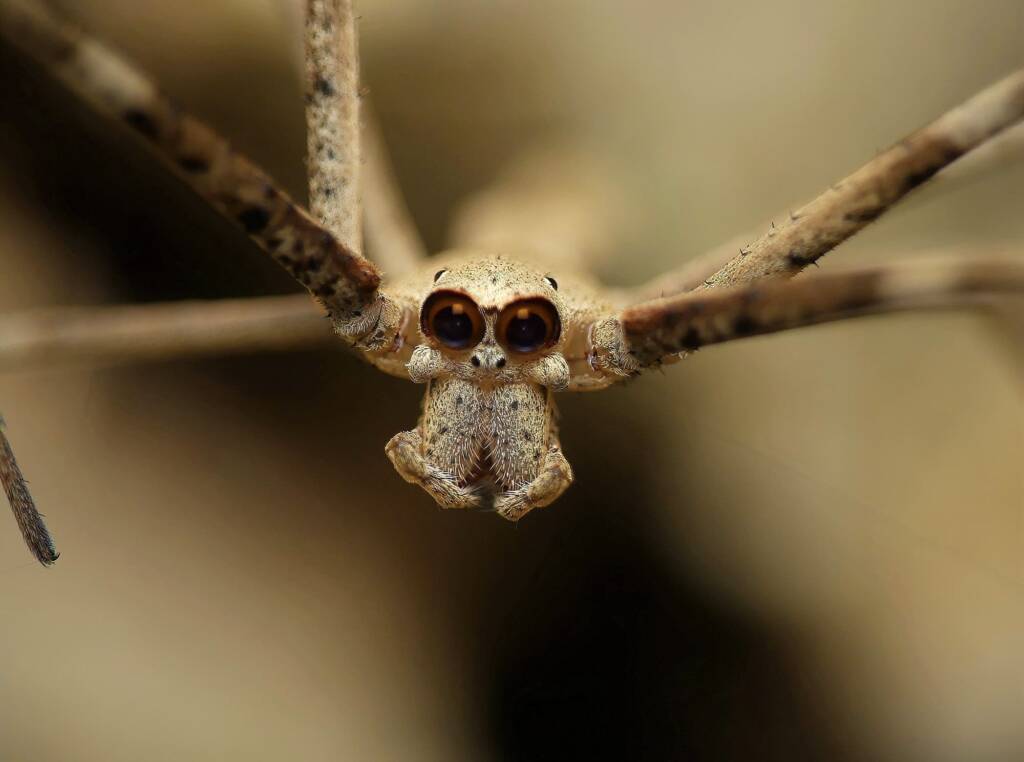Ogre-faced Net-casting SpiderNet Casting Deinopis
Belonging to the genus Deinopis, are the spiders known as the Ogre-faced Net-casting Spider. Their unique appearance have given them a variety of common names including Ogre-faced Spider, Gladiator Spider, Stick Spider, Web-throwing Spider and Net-casting Spider.

The Net-casting Spider are largish spiders, that are slow in movement. They have long body, up to 30 mm in length, with stick like legs. The body of the spiders tend to be light brown, to grey in colour. The genus Deinopis, with their eight eyes, two of which are enlarged and facing forward. The genus Menneus, has forward facing eyes that are less prominent.
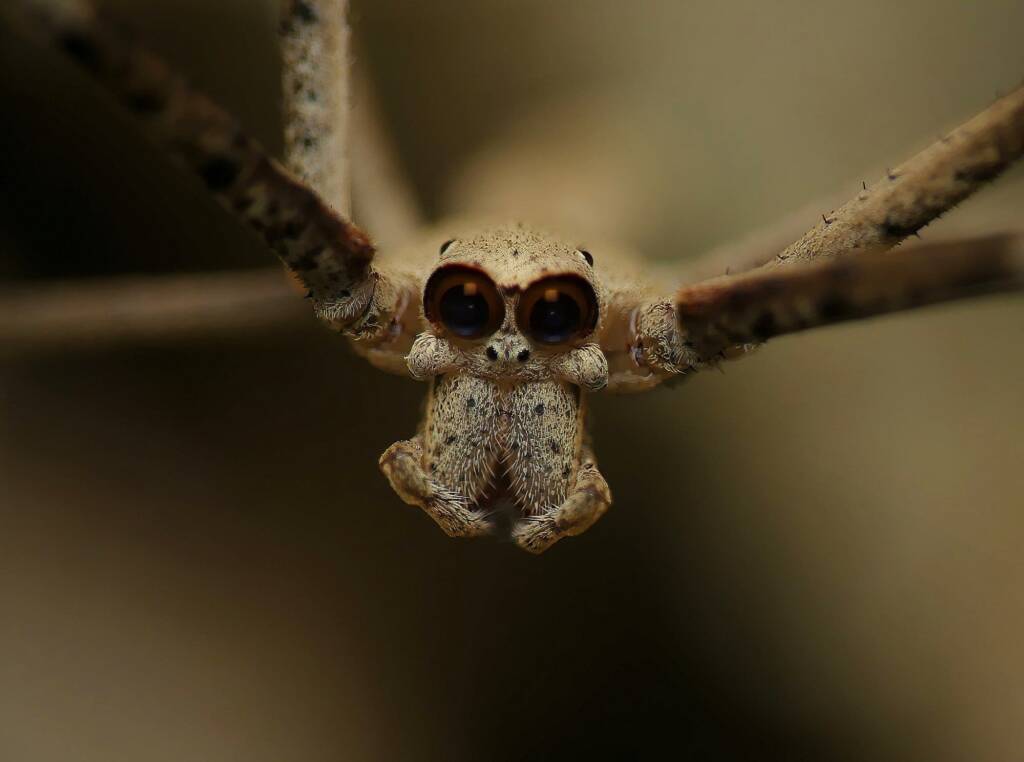
In the following series of photos of the male Net-casting Spider, you can see the forward facing eyes, the chelicerae (the mouthparts of the Chelicerata) and the pedipalps (the second pair of appendages of chelicerates that are also used as modified copulatory organs for holding on to the female during mating). The mature male have large, prominent pedipalps.
They have a wide tropical and subtropical range, although if you look at the distribution map on iNaturalistAU, they have been recorded around Australia’s coastal region, especially down through Queensland, New South Wales, Victoria, South Australia and Tasmania. They are widely distributed through the forest habitats of south-eastern Australia.

The genus Deinopis is derived from the Greek deinos, meaning fearful, and opis, meaning appearance.
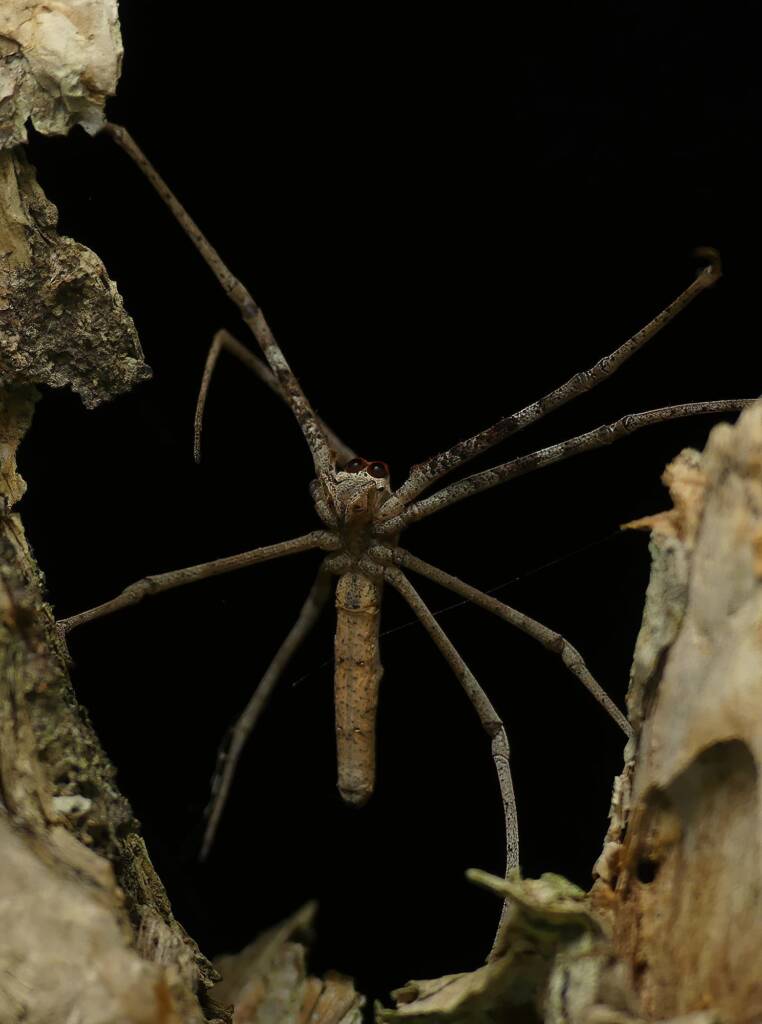

The amazing thing about the genus Deinopis spiders, are the way they catch their prey by creating and casting a net known as a cribellate web. Check out our page on the Net Casting Deinopis.

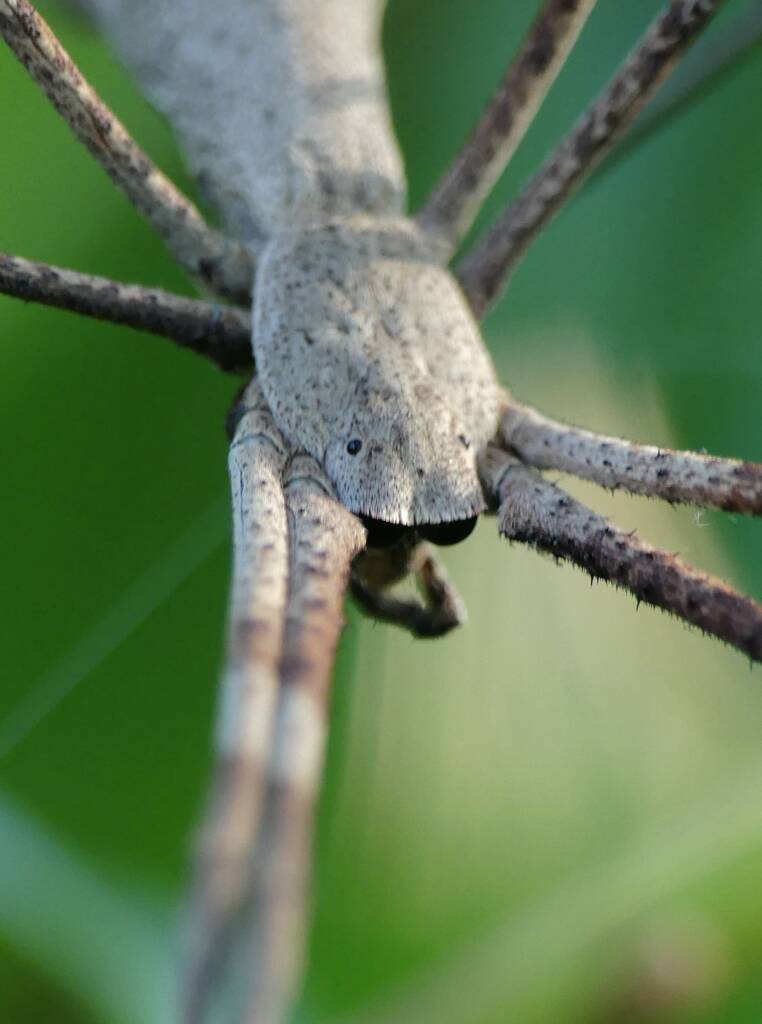
The species Deinopis subrufa has been moved to a new genus and is now classified as Asianopis subrufa.
- Scientific classification
- Kingdom: Animalia
- Phylum: Arthropoda
- Subphylum: Chelicerata
- Class: Arachnida
- Order: Araneae
- Suborder: Araneomorphae
- Infraorder: Entelegynae
- Superfamily: Uloboroidea
- Family: Deinopidae
- Genus: Deinopis
Common Net-casting Spider (Deinopis ravidus)
The species Deinopis ravidus is now re-classified to species Asianopis ravida (synonym Deinopis ravida).
The Net-casting Spider picture below, is the Common Net-casting Spider (Deinopis ravidus). Unlike other spider genus/species, where the females are larger than male spider, the female Common Net-casting Spider is smaller than the male, although the females have larger abdomen. The male and female spider of this species look different in that the female has two humps on each side of the abdomen. They are light brown or grey in colour.

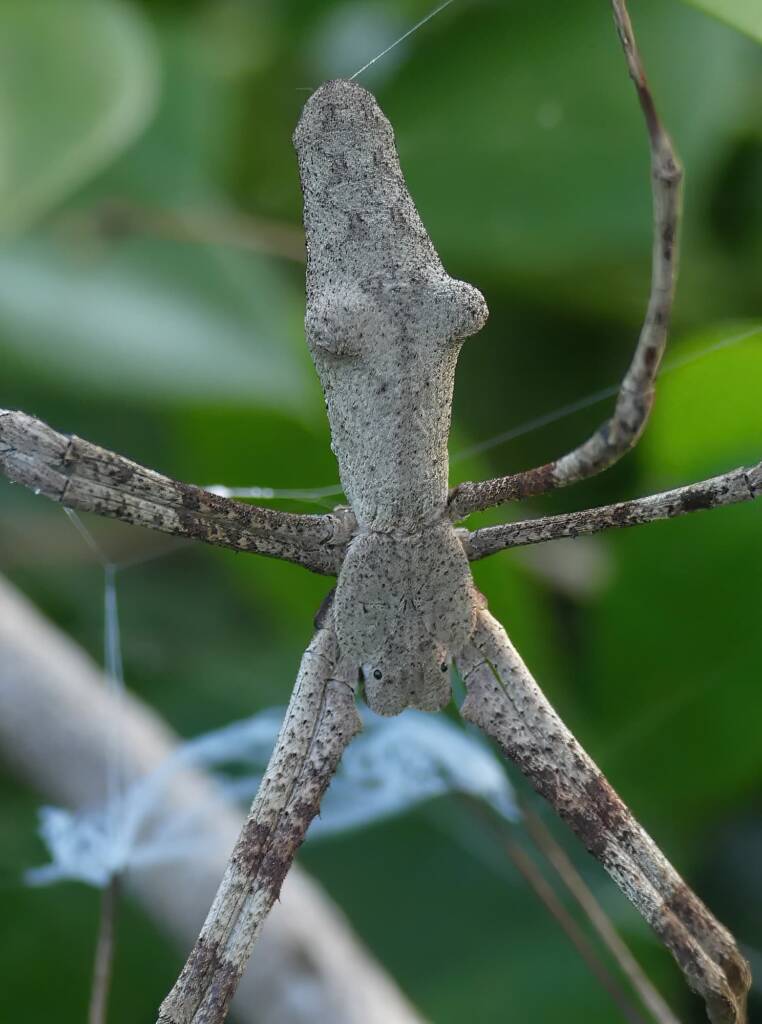
- Scientific classification
- Kingdom: Animalia
- Phylum: Arthropoda
- Subphylum: Chelicerata
- Class: Arachnida
- Order: Araneae
- Infraorder: Araneomorphae
- Family: Deinopidae
- Genus: Deinopis
- Species: Deinopis ravidus
Footnote & References
- Photos Ogre-faced Net-casting Spider (genus Deinopis) © Stefan Jones
- Ogre-faced Spiders (Genus Deinopis), iNaturalistAU, https://inaturalist.ala.org.au/taxa/194772-Deinopis
- Net-casting Spiders, Australian Museum, by Dr Mike Gray, 25 July 2022, https://australian.museum/learn/animals/spiders/net-casting-spiders/
- Family Deinopidae (Dinopidae)- Net-casting Spiders, Brisbane Insects and Spiders, https://www.brisbaneinsects.com/brisbane_weavers/Deinopidae.htm
- Common Net-casting Spider – Deinopis ravidus, Brisbane Insects and Spiders, https://www.brisbaneinsects.com/brisbane_weavers/CommonNetCasting.htm
- Deinopidae, https://en.wikipedia.org/wiki/Deinopidae (last visited Sept. 12, 2022).
- Deinopidae, https://en.wikipedia.org/wiki/Deinopidae (last visited Sept. 12, 2022).
- Biogeography and eye size evolution of the ogre-faced spiders, Published 22 October 2022, Authors Lisa Chamberland, Ingi Agnarsson, Iris L. Quayle, Tess Ruddy, James Starrett & Jason E. Bond, Scientific reports, Nature, https://www.nature.com/articles/s41598-022-22157-5
- A field guide to Spiders of Australia (2017) by Robert Whyte and Greg Anderson, Spiders of Australia, https://www.arachne.org.au/
Ogre-faced Net-casting SpiderNet Casting Deinopis
SpidersIndex of Spider Images Spiders in Australia Araneidae — Orb Weavers Arkys Australian Huntsman Spider Barking Spider Black House Spider Carepalxis sp Celaenia sp Crab Spiders Deinopidae — Net-casting Spiders Dolomedes sp Dolophones sp Flower Spiders Hackled Orbweavers (Uloboridae) Jewel Spider Jumping Spider Long Jawed Spider (Tetragnatha sp) Lynx Spider (Oxyopes) Mangrovia albida Maratus volans Missulena occatoria (Red-headed Mouse Spider) Miturgidae Nicodamidae (Red and Black Spider) Ogre-faced Net-casting Spider Poltys sp (Twig Spider) Redback Spider Scorpion-tailed Spider (Arachnura higginsi) Thomisidae Tiger Spider (Trichonephila plumipes) White-spotted Swift Spider (Nyssus albopunctatus) Wolf Spider



